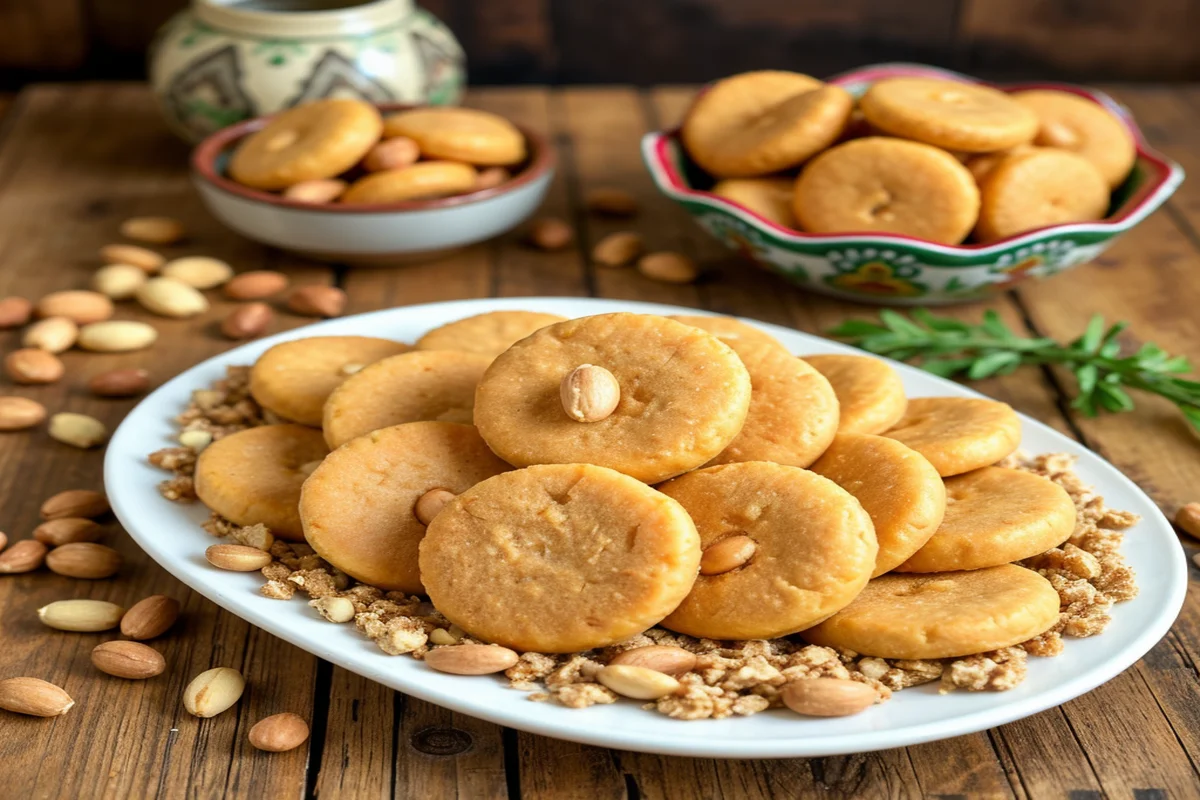Mexican candy is a delightful tapestry of flavors that uniquely blends sweet, spicy, tangy, and salty tastes. This incredible diversity stems from centuries of cultural fusion, where indigenous ingredients meet European influences. The result is a rich candy-making tradition that has given rise to some of the most iconic and beloved sweets not just in Mexico, but around the world.
In this article, we’ll explore the world of Mexican candy, discussing its origins, highlighting the top candies that have captured the hearts of many, and examining why these treats are becoming popular beyond Mexico’s borders. We’ll also answer frequently asked questions about Mexican candy, making this a complete guide to one of Mexico’s sweetest traditions.
The Rich History of Mexican Candy
Origins of Mexican Sweets
The roots of Mexican candy can be traced back to pre-Columbian times when the indigenous people of Mexico crafted sweets using amaranth, honey, and cacao. These natural ingredients were not only consumed as treats but also played significant roles in religious ceremonies and rituals.
With the arrival of the Spanish in the 16th century, European influences began to permeate Mexican cuisine, including its sweets. The Spanish introduced ingredients like sugar and cinnamon, which led to the creation of new sweets and the adaptation of traditional ones. Combining these elements with indigenous flavors laid the groundwork for the diverse candy culture we see in Mexico today.
The Evolution of Candy-Making Techniques
Over the centuries, candy-making in Mexico has evolved, with each region developing its own unique specialties. Traditional preparation methods, often passed down through generations, are still used, preserving the authentic taste of Mexican candy. From hand-made alegrías to the intricate process of making cajeta, these techniques showcase Mexico’s rich culinary heritage.
For those interested in the origins and traditional methods of Mexican candy-making, you can explore detailed historical insights here.
The Top 10 Most Popular Mexican Candies
When it comes to Mexican candy, certain treats have risen to iconic status, beloved by both young and old. These candies are not just sweets; they are a cultural experience, often evoking memories of childhood, family gatherings, and festive celebrations.
1. Mazapán

Mazapán is a crumbly, peanut-based candy that has become a symbol of Mexican confectionery. Made mainly from ground peanuts and sugar, this sweet treat is famous for its delicate texture that melts in your mouth. Its popularity has even inspired a national day in its honor, celebrated every January 12th as Día del Mazapán.
This candy’s simplicity and the nostalgic memories it evokes make it a favorite among many. Whether enjoyed on its own or used as a base for other desserts, mazapán holds a special place in the hearts of Mexicans.
2. Pulparindo

Pulparindo is a tamarind-based candy that perfectly embodies the sweet, sour, and spicy flavors that Mexican candies are famous for. Made from the pulp of the tamarind fruit, this chewy treat is seasoned with chili powder, salt, and sugar, creating a flavor profile that is both bold and addictive.
Available in various flavors such as original, mango, and watermelon, pulparindo is a candy that appeals to those who love a bit of a kick in their sweets.
3. Pelon Pelo Rico

A quintessential childhood favorite, Pelon Pelo Rico is a tamarind pulp candy packaged in a fun, squeezable bottle. When you press the bottom of the bottle, the candy extrudes through small holes at the top, creating what looks like strands of hair. This playful design, coupled with the candy’s tangy tamarind flavor, makes it a hit with kids and nostalgic adults alike.
For a deeper dive into the cultural significance and varieties of tamarind-based candies, you can explore more here.
4. Vero Mango & Vero Elotes
They are iconic chili-covered lollipops that showcase the sweet and spicy flavor combination loved in Mexico. Vero Mango is a mango-flavored lollipop covered in chili powder, while Vero Elotes, shaped like an ear of corn, has a spicy chili coating with a strawberry flavor.
These lollipops are not just candies; they are a sensory experience that takes you on a journey through the vibrant flavors of Mexico.
5. Rebanaditas
Rebanaditas are another popular chili-covered lollipop, but with a watermelon flavor at their core. The contrast between the sweet watermelon and the spicy chili coating makes these lollipops an exciting treat that keeps you coming back for more.
6. Duvalin
For those who prefer creamy and spreadable candies, Duvalin is a top choice. Packaged in small containers with a plastic spoon, it comes in flavors like hazelnut, strawberry, and vanilla. Duvalin’s smooth texture and rich taste make it popular with children, often enjoyed as a quick snack or dessert topping.
7. Obleas con Cajeta
They are traditional Mexican milk candy wafers that have been a favorite for generations. These thin, round wafers are layered with cajeta, a caramel-like confection made from goat’s milk, creating a sweet and satisfying treat that melts in your mouth.
8. Limon 7
Limon 7 is a powdered candy made from a mixture of salt and lemon, offering a tangy and sour experience that is unique to Mexican sweets. This versatile candy can be eaten on its own or sprinkled on other foods and snacks to enhance their flavor.
9. Cajeta and Glorias
They are two popular candies made from goat’s milk caramel. Cajeta is often enjoyed on its own or as a topping for desserts, while Glorias are soft, chewy candies mixed with chopped pecans. Both offer a rich, creamy texture that is hard to resist.
10. Chamoy and Tamarind Candies
Chamoy is a spicy, tangy sauce made from pickled fruit that is often used to flavor candies. Tamarind candies, such as Banderillas de Tamarindo and Lucas Hueras, are a staple in Mexican candy culture, offering a perfect balance of sweet, sour, and spicy flavors.
Modern Trends and International Appeal
The Rise of Mexican Candy in the U.S. and Abroad
In recent years, Mexican candy has seen a surge in popularity outside of Mexico, particularly in the United States. This rise can be attributed to several factors, including the growing Hispanic population, increased interest in global cuisines, and the influence of social media.
Large retailers now stock a variety of Mexican candies, and online platforms make it easier than ever to purchase these treats from anywhere in the world. The nostalgic appeal of these candies among Mexican immigrants also plays a significant role in their international success.
For those looking to explore the best places to buy Mexican candy online, you can find a comprehensive guide here.
Fusion Candies: A Blend of Tradition and Innovation
As Mexican candy gains global popularity, fusion candies are on the rise, blending traditional Mexican flavors with modern confectionery styles. These innovative treats mix the bold tastes of tamarind, chili, and cajeta with contemporary ingredients and presentation, creating exciting products that appeal to a broader audience.
Fusion candies are not only a reflection of the evolving candy industry but also a testament to the versatility and enduring appeal of Mexican flavors.
The Impact of Social Media on Mexican Candy’s Popularity
Social media platforms like TikTok and Instagram have significantly boosted the popularity of Mexican candy among younger audiences. Viral videos showcasing the unique flavors and fun packaging have sparked curiosity, leading to increased sales and visibility in international markets.
From spicy candy challenges to mukbangs featuring Pelon Pelo Rico, social media has put Mexican candy at the forefront of global snack culture.
Frequently Asked Questions About Mexican Candy
What makes Mexican candy unique?
Mexican candy is distinguished by its bold flavors and the use of indigenous ingredients like tamarind, chamoy, and cajeta. The combination of sweet, spicy, and tangy elements creates a taste experience that is unlike any other. Additionally, the cultural significance and traditional methods of preparation add to the uniqueness of Mexican candies.
Why are spicy flavors so common in Mexican candy?
Spicy flavors are a staple in Mexican cuisine, and this extends to the country’s candy-making traditions. The use of chili in candy is a reflection of the Mexican palate, which favors bold, intense flavors. Chili powder not only adds heat but also enhances the overall taste of the candy, making it more complex and satisfying.
Where can I buy authentic Mexican candy?
Authentic Mexican candy can be found in Hispanic grocery stores, specialty candy shops, and online retailers. Some large supermarkets also carry popular Mexican candies in their international food sections. For a curated selection of Mexican candies available for purchase online, check out amazon.
Is Mexican candy safe?
Yes, Mexican candy is generally safe to eat, but it’s essential to be mindful of certain factors. Some candies contain spicy ingredients like chili, which may be intense for those not used to it. There have been past concerns about lead contamination in some imported products, so buying from reputable sources is advisable. Always check ingredient labels, especially for allergens.
Why is Mexican candy often spicy?
Mexican candy is often spicy, reflecting the country’s culinary tradition where bold flavors are prized. Ingredients like chili powder and tamarind, common in Mexican cuisine, have naturally become part of candy production. Combining sweet and spicy flavors creates a unique taste experience that is particularly popular in Mexican culture.
Are there any health concerns with eating Mexican candy?
While Mexican candy is generally safe to eat, there are a few health considerations to keep in mind:
- Spiciness: The chili in many Mexican candies can be too intense for some people, especially those with sensitive stomachs or dietary restrictions.
- Lead Contamination: In the past, there were concerns about lead contamination in some imported Mexican candies. Regulatory measures have been implemented, but buying from reputable sources is still important.
- High Sugar Content: Like all candies, many Mexican sweets contain high levels of sugar, which can contribute to dental problems and other health issues if consumed in excess.
Where can I buy authentic Mexican candy?
Authentic Mexican candy can be purchased at Hispanic grocery stores, online retailers, and sometimes in the international section of larger supermarkets. Websites like Isabel Eats and specialty online stores offer various authentic Mexican candies, making it easy to find your favorites no matter where you are.
How do you store Mexican candy to keep it fresh?
Store Mexican candy in a cool, dry place away from direct sunlight to keep it fresh. If the candy has a high moisture content, like tamarind-based candies, consider storing it in an airtight container to prevent drying. Candies with dairy components, such as those containing cajeta, should be refrigerated to extend their shelf life.
Can children eat Mexican candy?
Yes, children can eat Mexican candy, but parents should be mindful of the spiciness and sugar content. Some candies may be too spicy for young children, so starting with milder options like Mazapán or Duvalin is a good idea. Always check the ingredient list for potential allergens, such as peanuts or dairy, especially if your child has food allergies.
What are some common ingredients in Mexican candy?
Common ingredients in Mexican candy include tamarind, chili powder, sugar, cajeta (goat’s milk caramel), peanuts, chamoy, and various fruits like mango and watermelon. These ingredients are often combined to create the distinctive sweet, sour, and spicy flavors Mexican candies are known for.
How is Mexican candy different from other candies?
Mexican candy stands out for its bold flavor combinations, often including sweet, salty, sour, and spicy elements. Unlike many Western candies that focus primarily on sweetness, Mexican candies frequently incorporate ingredients like chili powder and tamarind, which provide a tangy and sometimes fiery kick. Traditional ingredients and techniques give Mexican candy a unique texture and flavor profile.
Conclusion
When enjoyed in moderation and sourced from reputable brands, Mexican candy is as safe as any other candy. Always check labels for potential allergens, and be mindful of your tolerance to spicy foods. If you’re concerned about the safety of a particular candy, it’s wise to read product reviews or consult trustworthy health sources before trying it.

